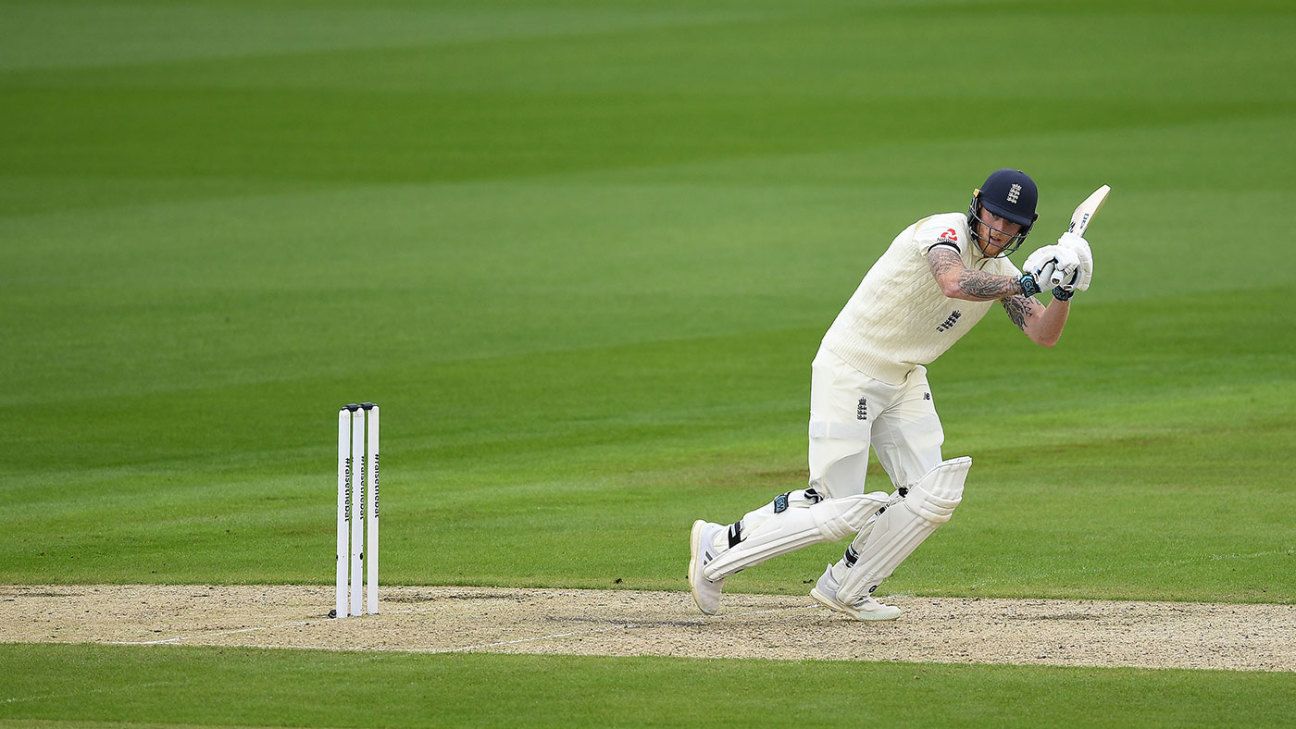Ben Stokes says that he took pride in his display of patience on the opening two days of the second Test, as he came through a battle of wills with West Indies’ bowlers to make 176 from 356 balls, his highest Test score on home soil and the first time he has ever batted for more than 300 balls in an innings.
Speaking to Sky Sports on the third day at Emirates Old Trafford, where rain caused a delayed resumption, Stokes spoke of his determination to not to get drawn into the sort of errors that caused his downfall in the first Test at the Ageas Bowl, where he was dismissed twice in the match by Jason Holder, for 43 and 46.
Asked to appraise his innings, in which his first hundred came from 255 balls, Stokes acknowledged that it had been “different”, but that both he and Dom Sibley, whose own hundred came from an even more sedate 312 deliveries, had been obliged to play the situation due to West Indies’ disciplined gameplans.
ALSO READ: Stats – Sibley’s slow show, and England’s second-longest partnership for 20 years
“I made a real conscious effort to be as clinical as I possibly could,” said Stokes, “especially around that sort of fourth- and fifth-stump line that Jason and Kemar [Roach] are fantastic at doing.
“It was about understanding what we had to do at different times throughout the game,” he said. “I had to be really disciplined in leaving the ball because I know by now that teams will hang the ball wide and test my patience. So I was playing the game with them as long as I could, and waiting to be able to capitalise on anything.”
It’s a measure of Stokes’ determination to improve his record as a batsman that, even in the wake of a 2019 home summer that featured two of the greatest innings ever produced by an England cricketer, he was willing to reappraise his technique and work on a new, more open stance that he feels has given him more chance to get settled early in his innings.
“I went into the winter and worked a lot with [assistant coach] Paul Collingwood,” he said. “After 2019, one thing that stood out for me was that, early on in my innings, I felt I was going quite hard at the ball, because I wanted to feel the ball on bat. I made a conscious effort to find a way that allows me to play the ball as late as possible for my first 20 to 30 balls.
“I wasn’t worried about the change,” he added. “I’m always trying to find different way to improve and I found that getting that trigger from leg stump across to off stump allowed me to do that, and also to get back into the ball as well. If I’m hitting the ball straight down the ground – whether with a drive or a defensive shot – I know that everything’s in pretty good order for me.”
The tweaks have borne fruit for Stokes already, but his rise as a batsman had already been in full flow. Since his permanent promotion to No. 5 in England’s Test line-up – midway through last summer’s Lord’s Test, where he made the first of his two Ashes hundreds – Stokes has amassed 1100 runs at 61.11. His career average in that period has jumped from 33.76 to 37.90.
“I’ve had a bit of success with that new trigger so I’m happy with where everything is at the moment, but I’ll still be going away and I’m working on things to develop and get better,” he added. “I was disappointed with the way that I got out at the Ageas Bowl, especially in the second innings where I didn’t really have to play a ninth-stump ball.
“When I walk down the pitch, I try and make the good-length balls into half-volleys, and when I go deeper in my crease, it’s about looking for the potential to cut or pull. It’s about putting bowlers off their lengths as much as I possibly can, and not allowing them to settle into a rhythm.
“But how can I keep playing in the same mentality that I want, but do it better? If I’m going to walk down the pitch, and the ball is eighth-ninth-stump line, then I don’t have to play it. Just because you’re walking down the pitch, it doesn’t mean you have to try and blaze it for four.”
